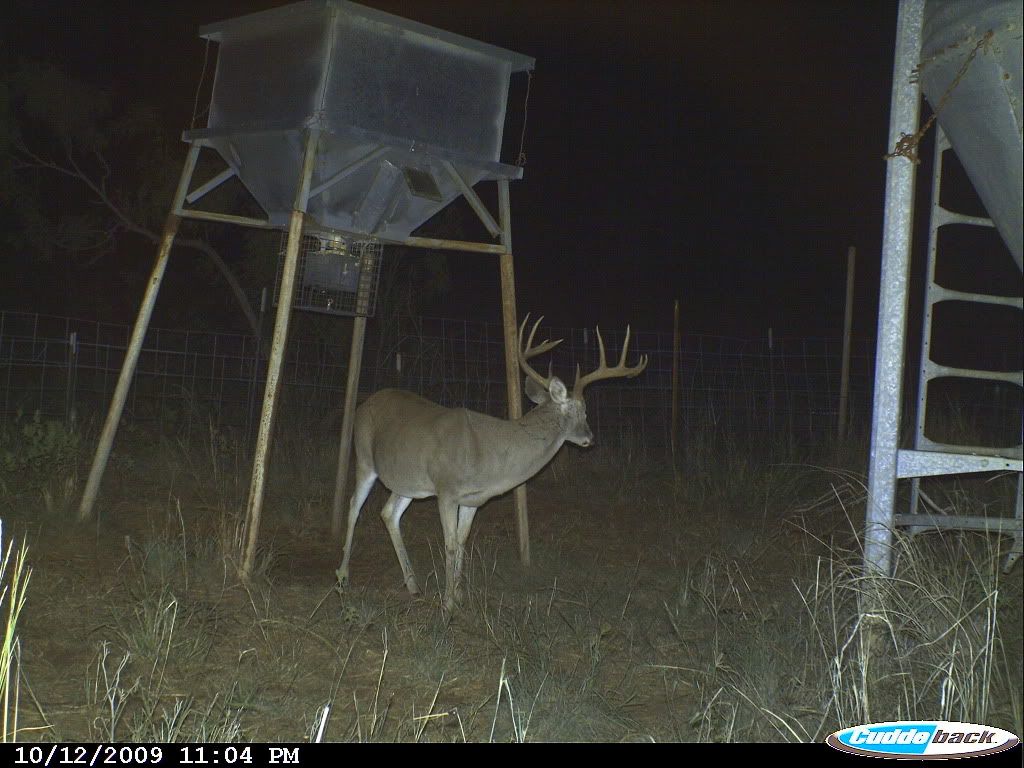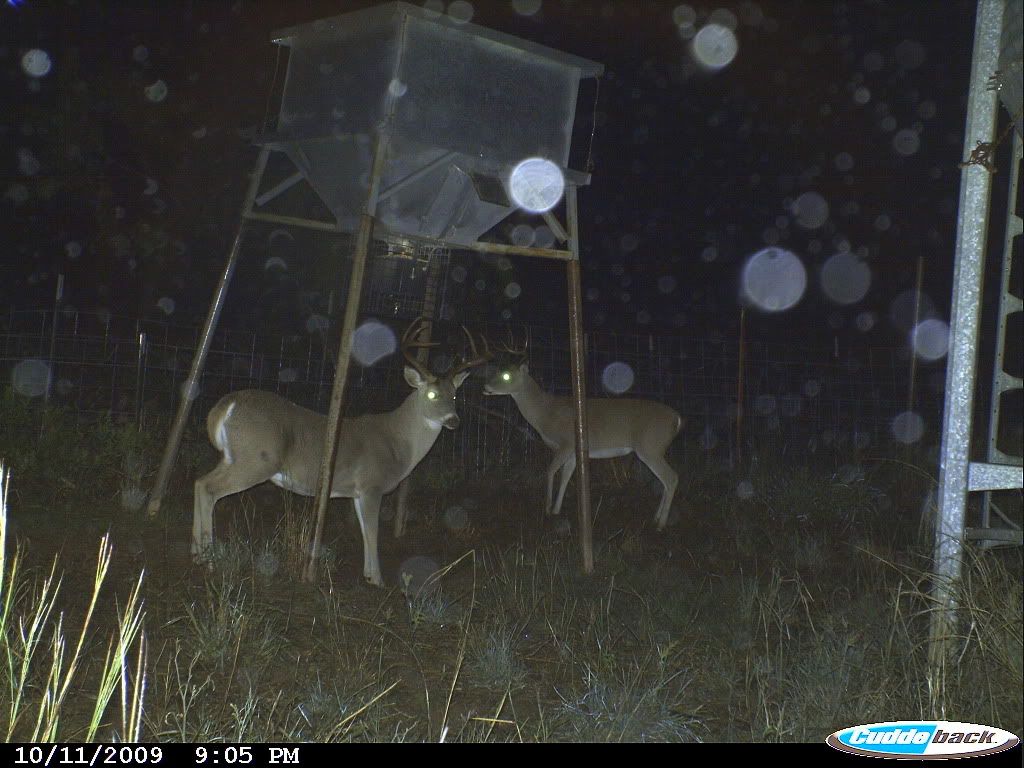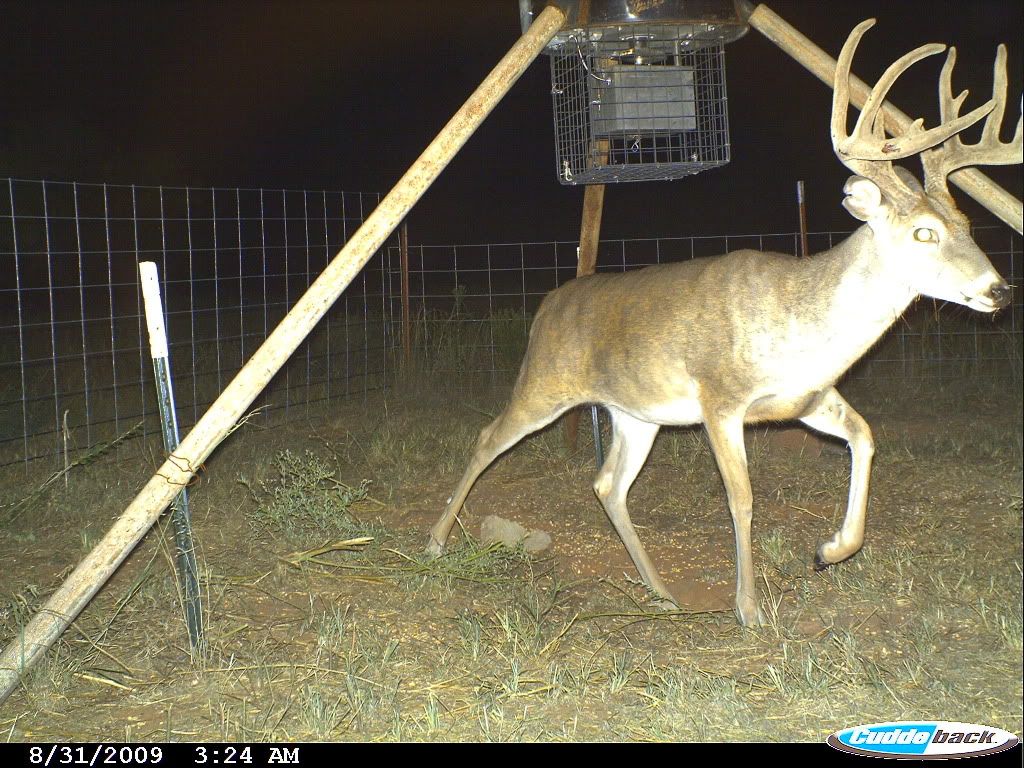Re: Deer feeders
I agree that TV shows are frequently unrealistic BS. On any subject.
<div class="ubbcode-block"><div class="ubbcode-header">Originally Posted By: mavrick10_2000</div><div class="ubbcode-body">
<snip> Blackpowder hunters say it about rifle hunters, musket hunters say it about in line muzzleloaders, crossbow vs. compound vs. recurves vs. longbow. Where does that end? With a stick or a rock, naked, "That's the way real hunting is done". Someone would still whine saying the only way is to kill it with your bare hands, the way "real hunters" do. <snip>
</div></div>
I think I agree with mavrick10. Using a rifle, shotgun, musket, bow and arrow, spear, sling, sharp stick, knife, or rock is unfair. So is camoflage clothing. Hunt naked. Rassle them to the ground and strangle them. That's how the mountain lions do it. (Grin)
Seriously, I know of a property in the Texas Hill Country where, thirty years ago, the whitetail deer population was way too high and the buck:doe ratio was about 1:4. Hunting pressure had been on the bucks with very few females taken. Maybe one fifth of the deer were exotics, mostly axis deer and sika deer. Originally, the exotics in our part of Texas were stocked on high fenced "exotic" ranches. But, exotic deer get out through holes in fences or when fences wash out when thunderstorms make the creeks and rivers rise. And then they spread across the countryside.
The property was one half high fenced on the perimeter. The strategy was to cut the deer population in half and hit the females hard to move the buck:doe ratio closer to 1:1. Since the neighboring properties were not practicing the same management practices, revenue from the first couple of years was used to high fence the rest of the perimeter. Commercial doe hunts were needed to remove enough does. To make for successful three day doe hunts, feeders were used. Most hunters got their does in the first couple of days. So the feeders were a management tool.
Realistically, in the Texas Hill Country, one can not feed enough year round to "grow big bucks" unless you are running a deer feed lot with small pens like a cattle feed lot. You have to restrict the deer in the feed pen with access to the feed with a high fence. Otherwise, you can't control which deer eat the feed. One would have to put out a tremendous amount of feed if all deer on the property had access to the feed. And the population would sky rocket. So the feed is an attractant to improve hunter success on managing the population. Hunters still have to be quiet, observant, and shoot accurately. For many, the experience is satisfactory.
Does stalking through the brush require different skills? Yes. But the fact remains, keeping the population in check in our area requires using feeders. Otherwise, the population goes way up, then when a prolonged drought comes along, the population crashes.
The exotics and whitetails preferentially eat (1) forbs, (2) browse, (3) and then the exotics eat grass. When times are good, the population goes up. When times are bad, the forbs and browse get eaten and then the whitetail starve because they don't have the stomach bacteria to digest dried grass. The axis and sika deer are able to survive on dried grass.
About forty years ago, the Texas Parks and Wildlife Department set up two experiments. They put six whitetail and six axis in one high fenced 96 acre pasture and six whitetail and six sika in another high fenced 96 acre pasture. By "pasture", I mean raw rangeland with a mixture of grass, forbs, brush, and trees.
In the pasture with sika and whitetail, <span style="font-style: italic"><span style="font-weight: bold">"From January 1971 through April 1974, the whitetail population increased to 15 and the sika herd increased to 16. Competition for available food became severe between the two species. This competition, combined with a drought in the summer of 1975, resulted in severe white-tailed deer food shortages, and the whitetail population dropped to six deer by the end of 1976. During this same period, the sika deer population increased to 32 animals. In December 1979, three whitetails and 62 sika deer were present in the pasture. The remaining three whitetails died in February 1980.</span></span>"
In the pasture with axis and whitetail, "<span style="font-style: italic"><span style="font-weight: bold">Axis deer populations increased from the initial stocking of six deer in 1971 to 19 deer by December 1975. A major die-off, which reduced the axis herd to 15 animals,occurred in 1979 when the population had increased to a density of one deer to 4.6 acres. White-tailed deer had increased to 11 by 1979, but a winter die-off reduced the population to six animals. The whitetail population was never able to rebuild after this die-off, and a total of three non-breeding animals remained in the plot at the end of 1979.</span></span>"
Link to the full report,
http://www.tpwd.state.tx.us/publications/pwdpubs/media/pwd_lf_k0700_0103.pdf
and an article in the April, 2007 Texas Parks and Wildlife magazine.
http://www.tpwmagazine.com/archive/2007/apr/ed_3/
Bottom line, without feeders to provide successful harvests, whitetails are going to be history in the Texas Hill Country. Thirty years later, the property mentioned at the top of this post has about 65% exotics and 35% whitetails. Harvest this winter was 75% exotics and 25% whitetail. Given a choice of an exotic antlered and an exotic antlerless, the antlerless exotic is taken to try to get the breeding females off the place.
Feeders are used to get as many exotics as possible off the place in the limited time available for hunting. There is no closed season or bag limits on exotics. The Texas Parks and Wildlife only regulates harvesting of native game animals. Trapping was attempted but not successful in getting enough exotics off. Spot lighting at night is being considered. If deer are shot from vehicles, they learn to hide when they hear vehicles coming. Regular vehicles or vehicles with the high chairs.
It may be that, like fire ants and "killer" bees, the exotics are going to spread across the US and kill off the native whitetails. Maybe hunters in other parts of the country should be sending us money to help us bait the deer to keep the exotics in check.
FWIW and YMMV. Time for bed.








